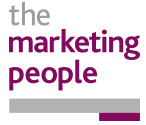
When many businesses first come to us, they often say “I don’t know if my marketing is working.” They’ve tried a few different things, but it doesn’t appear to be doing anything other than costing them money. Does that sound familiar?
It’s important that you can show the Return on Investment (ROI) of your marketing efforts. If something is working, you need to be able to show that. And if it doesn’t work, you need to be able to prove that so you don’t waste further time and money on something that doesn’t work.
When businesses come to us and say “I don’t know if my marketing is working”, we evaluate these 6 things to find out what might be the cause of the problem.
Have you set a goal? If so, what was it?
While all of these points are important, this is a huge one. If you haven’t got a goal, how can you possibly know whether your marketing is working?
When setting goals, follow the SMART method to create goals that are:
- Specific
- Measurable
- Achievable
- Realistic
- Timely
How are you tracking your marketing activities?
Once you know what you’re working towards, you need a way of tracking activity produced by your marketing campaign. If you aren’t tracking what’s happening, you won’t know if your marketing activities are working or not.
Tracking and monitoring needs to be considered before you begin marketing as you may need to implement something before you campaign begins, such as setting up a dedicated phone number, or setting up goal tracking in your analytics software.
Exactly how you track your marketing campaign will depend on what you’re doing:
- If you’re running a special offer, you might look at orders using the offer code in an email you sent out
- If you’re getting people to call you, you would track phone calls to a dedicated number, or you could ask people where they saw your number
- If you’re at an event, you might just track the number of people who put their email address down on your email marketing form
By tracking your marketing activities, you will easily be able to identify whether or not you are reaching your goal.
How strong was your campaign and call to action?
Your call to action (CTA) is the most important part of any marketing campaign because it tells your target audience what you want them to do next.
If your CTA is weak, unclear, confusing, or if you have multiple CTAs, your audience won’t know what to do. Best practice is to have one CTA that is focused on getting someone to take the next step.
Keep your CTA succinct and use verbs to encourage your target audience to take action as soon as possible.
The rest of the copy should back up the CTA and encourage your audience to take action by focusing on their pain points and telling them how your product / service can remove that pain.
What did your marketing activity look and feel like?
The way things look, and feel if they are physical things your audience can hold, is incredibly important. Especially if this is the first contact someone will ever have with your brand.
Think about the junk mail you get through your letterbox at home. I bet you’ve received a cheap and nasty looking leaflet from a local takeaway that you’ve never heard of before. It’s confusing on the eyes, there are probably lots of dark colours, bad editing, the paper feels thin, and just looking at it makes you feel like you might get food poisoning. What do you do? You throw it out.
Now, it might be that the takeaway makes delicious food, but if you judged it on that piece of marketing material alone, it certainly didn’t give you the impression of delicious, filling food.
It’s not just the first time you contact your audience that you need to make a great impression; you need to make a great impression every time you contact your audience and customers.
A great impression can remind loyal customers why they are a customer of yours, encourage them to purchase from you again, and hopefully remind them to tell their friends about you.
If that’s not enough to convince you that your marketing to existing customers needs to be high quality, this statistic might: 80% of your revenue will come from 20% of your existing customers.
Is it your audience’s preferred method of communication?
This is where a thorough understand of your audience is helpful and will help you.
Where your marketing material appears is important. If your audience are 16-25 year olds who regularly use the internet, then online is the best place to target them.
If your audience are 70+ olds who don’t use the internet, then offline marketing activities will suit them better.
What’s your brand like? Is it putting people off?
The way your brand looks can play a large part in whether or not your audience pay attention to your marketing.
As a consumer, you probably understand this yourself.
If you see a brand that looks small, unprofessional, outdated, and maybe even a bit dodgy, you will probably steer clear of it. No matter how good an offer it is. You don’t want to risk being ripped off, or receiving a faulty product.
If you see a brand that looks clean and professional, it will automatically come across as much more trustworthy than a brand that looks bad. It will give you confidence that the business knows what they’re doing. That you’re likely to get a product which fulfils your needs.
If just one of the points above isn’t right it can prevent your marketing activities from being effective, which means it’s wasting your time and money.
To find out if your brand might be putting your audience off, read 4 signs you need to rebrand your business.
